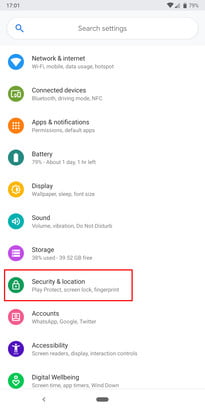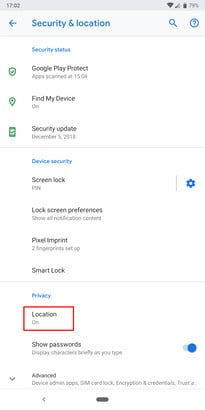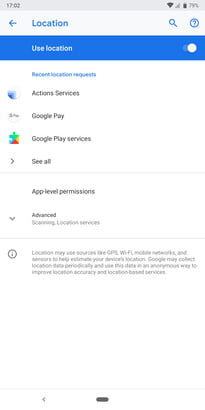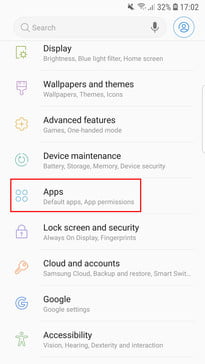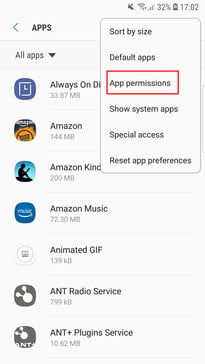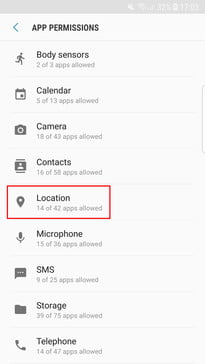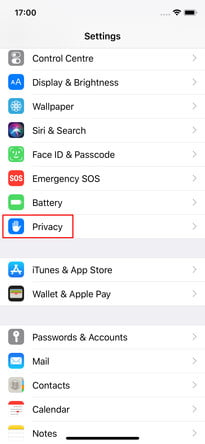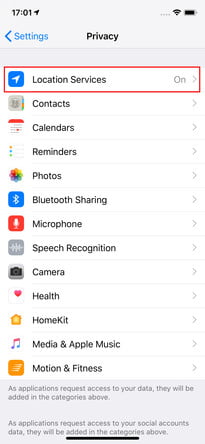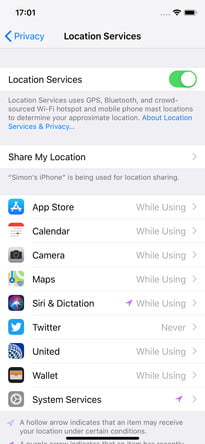Do you feel like you are being watched and followed? Well… We’re sorry to tell you that you may be right. Apps for your smartphone often include tracking that follows you wherever you go.
If you want a little more privacy (usually!), there’s a way to turn off tracking. In the following guide, we will help you find out who is tracking you and how to put an end to this situation, on both Android and iPhone devices.
It’s not just about where you shop, but all the places you go, which may include various personal situations that you don’t want to talk about, like going to an antenatal clinic or an Alcoholics Anonymous meeting. Either way, this data reveals potentially sensitive details about your life.
Find out which apps have access to location data
It’s a good idea to start by reviewing the apps on your phone that have access to location data. Many apps have legitimate reasons to track you, so be aware that denying tracking access may prevent some apps from working properly.
For example, a navigation app like Google Maps won’t be as useful if it doesn’t have access to your location. Common tracking monitoring applications include:
Ride sharing apps– Apps like Uber and Lyft will track your location for their drivers, and they can do this all the time, not just when you need a ride. Typically, there is no way to turn off location tracking for these apps without turning them off.
Apps for offers and coupons– These apps try to collect as much information as possible from you for advertising purposes, usually including your location.
News and weather apps– These apps track your data, in part to provide more specific information based on where you are. But they usually don’t need it to function.
Streaming apps: Yes, even apps like Netflix will track your location, and there’s no good reason for it other than potentially combating geo-restricted content.
Social Networking Applications– Some of the most infamous location trackers!
Auto Insurance Applications: Many of these apps can use your phone’s sensors to not only check your location, but also calculate your driving speed, braking speed, and more.
How to prevent location tracking on your Android phone
If you have an Android device and want to turn off location tracking completely, it’s easy to do, although the exact instructions may vary slightly from phone to phone. At the moment, most of them are following a similar path, but with updates the situation may change.
On Google Pixel 4, go to Settings > Location and deactivate Use location.
On Samsung Galaxy S20 Plus, follow the link Settings > Location and turn it off.
On Huawei P40 Pro, go to Settings > Location and turn it off.
This will disable location tracking and no app will have access to it anymore. This also means that, in theory, Google and the phone manufacturer won’t track and store your location, although there is evidence that they will anyway, and you may still receive ads based on your IP address location.
Unfortunately, turning off location completely also means you won’t be able to track your phone if it’s lost, you won’t be able to see or share your location on Google Maps or other mapping services, and some other services and apps may not work as well as They. they would have done it differently.
Another thing to consider if you want to limit Google’s tracking is your online and app activity. You can find complete instructions on how to track and delete search and browsing activity, which sometimes also includes location, on Google.
You might be interested in:
- Best iPhone Apps
- Best Android Apps
- Best Messaging Apps for iOS and Android
How to Restrict Certain Apps on Android
If you decide that completely turning off location tracking is too far, you can disable certain apps that you prefer not to have location access. Again, the instructions will vary slightly depending on your phone.
For example, on Pixel, go to the app Settings > Location > App Permissions..
On a Samsung Galaxy, go to Settings > Applications > Menu (three dots at top right) > Application permissions > Location..
On your Huawei phone, go to Settings > Apps & notifications > Permissions > Your location..
Review the list and turn off any features you prefer that don’t have the ability to track your location.
How to prevent location tracking on iPhone
On iOS, the setup is a little easier, so if you want to turn off location tracking on your iPhone or just limit certain apps, you’ll need to go to Settings > Privacy > Location Services., where you can disable location services. fully.
Note that this will affect some services and apps, such as Maps and Find My iPhone, so this may be a step too far. However, it’s worth noting that location services can be re-enabled on a device if it is in lost mode. You can put your iPhone into lost mode via iCloud.
IN Settings > Privacy > Location Services.you’ll also see a list of apps that have access to location data, and you can tap each one and decide whether to allow it access to your location. Never when using the application or Always.
What happens to already recorded location data?
Now that you’ve stopped various apps and services from tracking your location in the future, you may be wondering if you can delete the location data that companies have already collected about your movements.
If you have an Android phone, you can ask Google to delete your location history. Just follow this link, make sure you’re signed in to your Google account, and click the button Delete location history.
Please note that you will permanently delete the information and will not be able to recover it. You can log into your Google account on any device to delete your history this way.
If you want to permanently block Google from using location data again, visit this web page once you’re done. Where does he speak? Location historymake sure this option is disabled.
It’s also a menu where you can see past activity that Google has tracked in addition to location, so it might be worth a look.
Apple does things differently: your iPhone constantly tracks where you are and can create a list of important places, places you often visit and spend time (work, home, cafes, bars, parks and anywhere else).
Apple does this to automate destinations in the Maps app and says that the data is encrypted and even Apple can’t access it, but if you find them invasive, you can stop them.
If you have an iPhone, follow the link Settings > Privacy > Location Services. and scroll down to search System Services > Important Locations. Sign in if necessary and then find the button Delete history at the bottom. Select this option to delete past locations.
If you don’t want Apple to track this information again, make sure the switch at the top is turned off before closing Settings.
Third party companies that store your data
Unfortunately, there’s no easy way to identify or delete the data companies collect when you use their apps. If you want to take matters into your own hands, you can contact the specific company collecting your data and review their privacy policy.
However, there is a chance that by then they will have already sold your data. There is no law in the United States that legally requires companies to help you.
If you are a resident of the European Union, there are certain laws that protect you. By law, you can request a personal copy of all information the company has stored about you, including your location data.
In addition to the right to request this data, you also have the right to ask them to delete it. For more information on how to request your data and your privacy rights, you can read the guidance from the UK Information Commissioner’s Office.
Although this is your legal right, you may have to give up some hopes of protecting your data. If you want to improve your privacy, there are ways to protect yourself. We recommend using one of the best VPN apps on your device.
Source: Digital Trends







